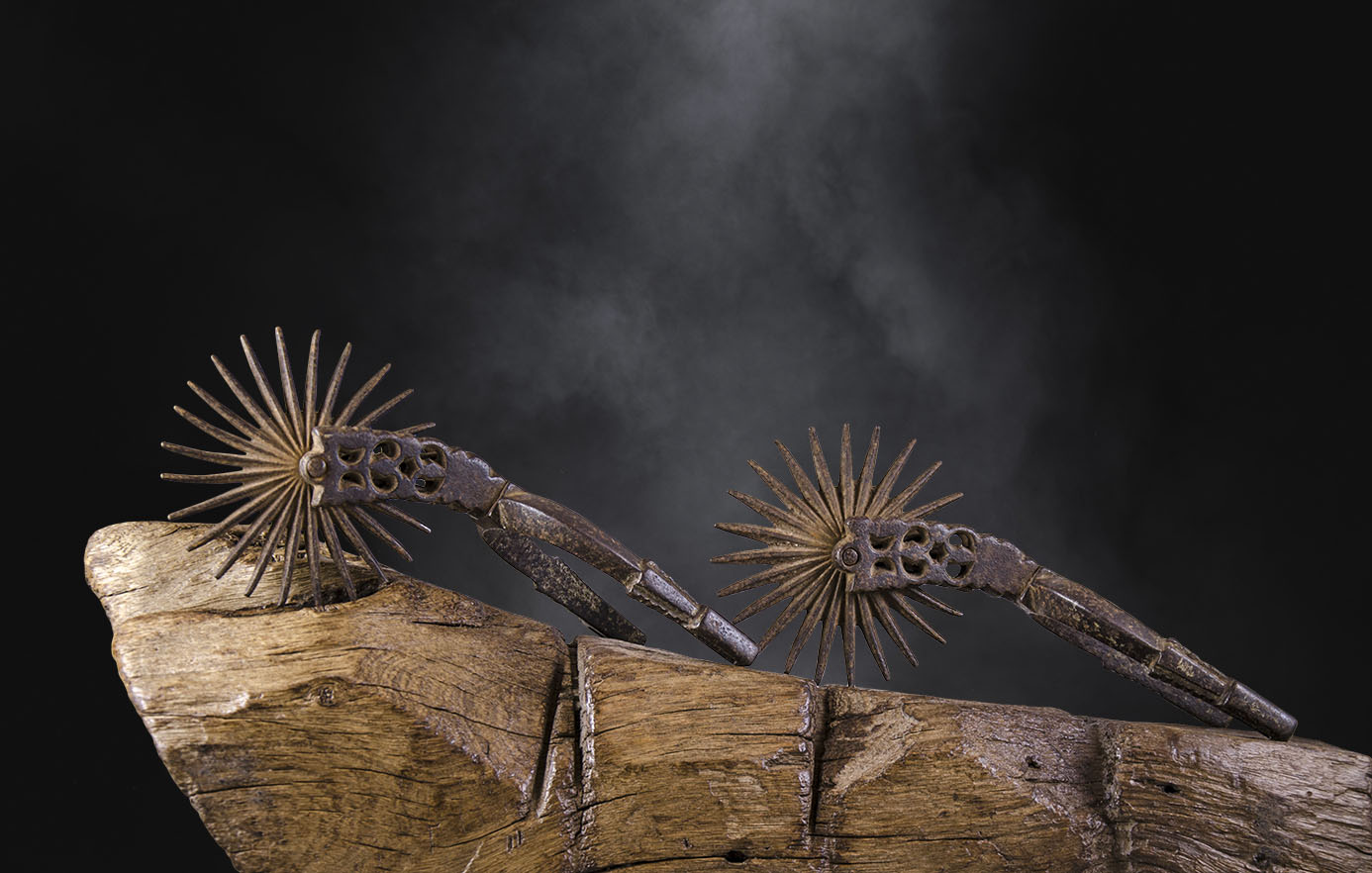BACK TO TOP
IRONS AND OTHER METALS
TRANSANDINE CREOLE
Pair of iron spurs. Chili. XIX century.
Pair of cast iron spurs, forged, openwork and chiselled. With its simple, faceted bow, it has an important semi-curved, openwork pihuelo, with wide and typical slices.
Length: 21cm. Opening: 8.3cm. Weight: 829 grams.
European heritage -and beyond in time, Moorish-, like everything related to horsemanship -coming on the ships of the conquest-, the spurs underwent an evolution from the first, military, simpler spurs and with a long spike to pihuelo mode, variants that were adopted in a first stage by the novice aboriginal riders.
Among the trans-Andean Creoles, the spurs were gaining in size and complexity, made of iron. Starting in the 18th century, with widespread cattle ranching and already being a relevant economic sector, horsemen had to travel long distances to access the best pastures; They did so equipped with important accessories that made up their mount, and they needed generously sized spurs. This is how the variants that today most attract our attention were born. Even Darwin himself was surprised to see such large spurs; "Why so heavy and equipped with dozens of points?" He asked himself. (1)
Note:
1. Quoted in “Spurs and Stirrups”. National Historical Museum, Santiago, , p. 19.
Are you interested in selling some works?
Send us an email briefly indicating
which works you intend to put on sale, and we will respond. click here
Subscribe to our newsletter to be updated.
Check our Newsletters